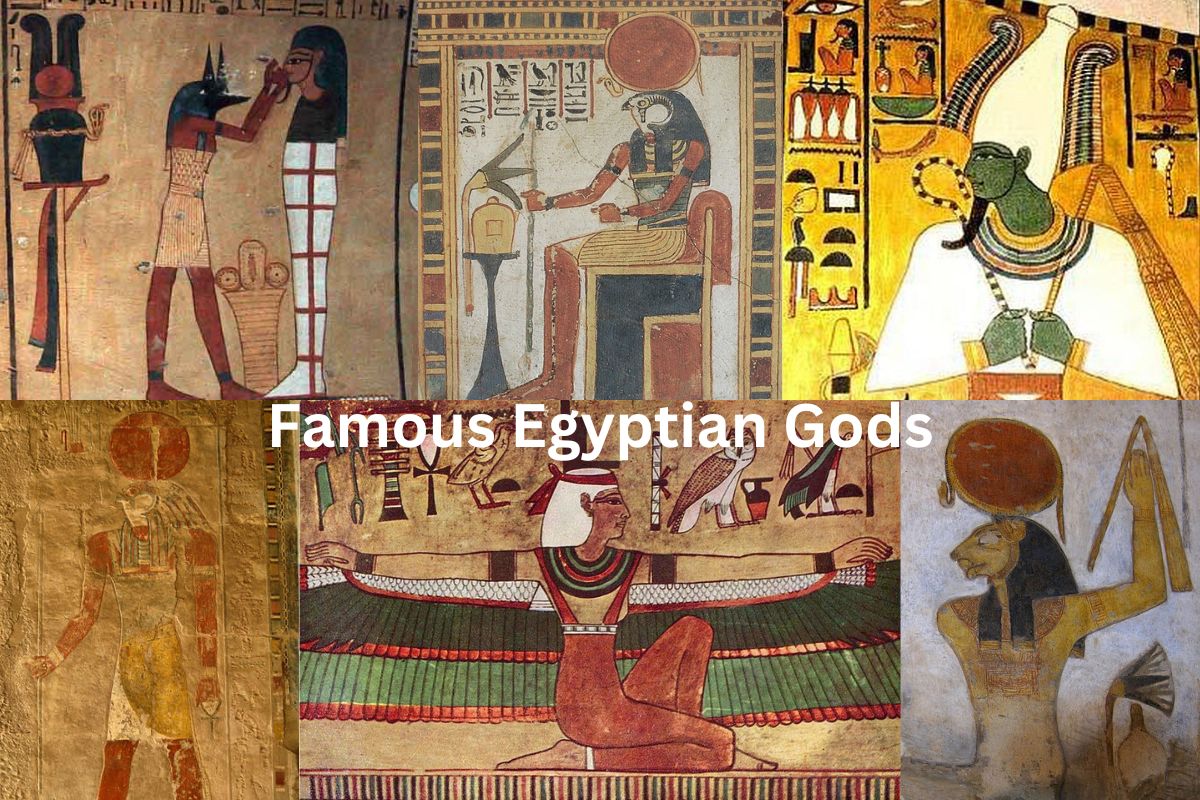The ancient Egyptian religion was a sophisticated system of beliefs and rites centered on a pantheon of gods and goddesses.
The ancient Egyptians worshiped and respected these deities, believing that the gods wielded enormous power over their lives and the natural world.
Certain Egyptian gods were more renowned and widely worshiped than others. Ra, the sun god, was regarded as the most significant of all Egyptian gods, but others such as Anubis, Osiris, Isis, Horus, and Thoth were also revered and worshiped.
The gods were frequently represented in a variety of shapes, such as animal-headed creatures, human-like figures, or a combination of the two.
Horus, for example, was frequently shown as a falcon-headed man, but Anubis was frequently depicted as a jackal-headed guy. The animals represented the gods’ strengths and traits, such as the falcon’s speed or the jackal’s cunning.
The gods were important in many aspects of Egyptian society, including religious rites, politics, agriculture, and art. Today, the legacy of the ancient Egyptian religion lives on via the numerous spectacular temples, tombs, and monuments that were created in honor of the gods.
Famous Egyptian Gods
1. Ra

Ra was a revered and significant god in ancient Egyptian religion. He was regarded as the sun deity and was said to have created the earth and all living things. Ra was associated with the sun, which was considered as a sign of creation and renewal.
Ra was frequently represented in Egyptian mythology as a man with the head of a falcon, wearing a sun disk on his head and wielding a scepter. He was also represented as a scarab beetle, which was linked to the sun and rebirth.
Also Read: Famous Egyptian Myths
Ra was thought to have created the world by pronouncing its name into existence, and he was also in charge of the sun’s daily cycle. Ra, according to mythology, would wander across the sky during the day and through the underworld at night, where he fought the forces of chaos and darkness.
Ra was a great god who was frequently connected with other deities. He was, for example, sometimes portrayed as the father of Horus, the deity of the sky and kingship. He was also affiliated with other gods like as Atum, the first god believed to exist, and Amun, the god of creation and fertility.
Also Read: Facts About Ancient Egypt
Throughout thousands of years, the ancient Egyptians worshiped Ra, and his cult was especially prevalent during the Old Kingdom period. Several facets of Egyptian culture bear his imprint, from art and architecture to religious ceremonies and beliefs.
Ra and the other gods’ legacy lives on today through the many spectacular Egyptian temples, tombs, and monuments created in their honor.
2. Anubis
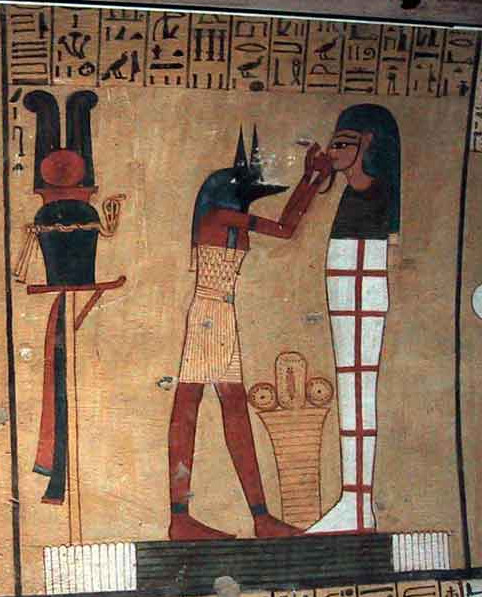
Anubis was an Egyptian god who was associated with mummification, funerary ceremonies, and the afterlife. He was frequently represented as a jackal or a guy with a jackal’s head.
Anubis was connected with death and burial ceremonies because the jackal was a scavenging animal that was commonly spotted in Egyptian graves.
Anubis was said to be the son of Osiris, the afterlife deity, and his spouse Nephthys. According Egyptian legend, Anubis assisted his mother in protecting Osiris’ body after his brother Set killed him. Anubis became connected with the preservation and protection of the deceased as a result.
Also Read: Egyptian Gods Facts
Anubis was important in the mummification process, which was a complex ceremony involving the preservation of the body for the afterlife. He was in charge of measuring the deceased’s heart against the feather of truth, a procedure known as the “Weighing of the Heart.”
If the heart was heavier than the feather, it was thought that the person had led a sinful life and would be devoured by Ammit, a demon who was part lion, part hippopotamus, and part crocodile. If the heart was discovered to be lighter than the feather, the individual would be permitted to join the afterlife.
Anubis was revered throughout ancient Egypt, and his influence may be found in many parts of Egyptian society. His religion was very popular during the Old Kingdom period and remained influential throughout the pharaonic era.
Anubis is still one of the most known and iconic figures from Egyptian mythology today, inspiring art, literature, and popular culture all around the world.
3. Osiris
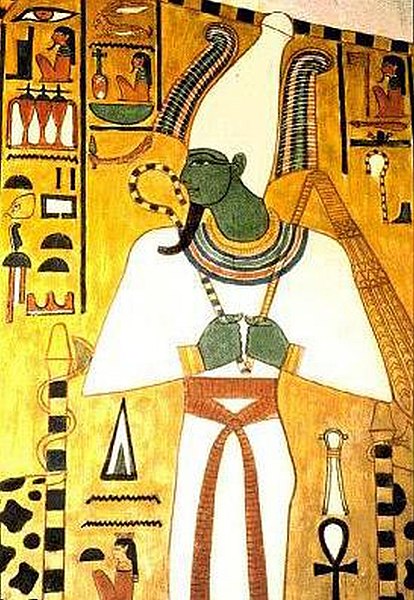
Osiris Osiris was a major and extensively revered god in ancient Egyptian religion. He was revered as the god of death, resurrection, and fertility.
Osiris was the first king of Egypt, according to mythology, and was responsible for introducing civilization to the region. He was also credited with introducing the people to agriculture, law, and religion.
Osiris was frequently represented as a mummified figure with green or black skin, reflecting the fertile Nile riverbanks. He was also depicted wearing a crown with two towering feathers on either side, symbolizing his might and authority as pharaoh.
The narrative of Osiris’ death and resurrection was essential to ancient Egyptian religion. Osiris was assassinated by his envious brother Set, who dissected his body and spread the pieces over Egypt, according to mythology.
Isis, Osiris’ wife, discovered the pieces and rejoined them, using her magical skills to resurrect him. Osiris became the god of the afterlife after his resurrection, presiding over the judgment of the dead and their trip into the underworld.
The religion of Osiris was especially prevalent during the Middle and New Kingdoms, and his influence can be observed in many parts of Egyptian society.
The yearly Osiris festival was one of the most important religious occasions in Egypt, with people flocking from all over the kingdom to honor him at his temple in Abydos.
Osiris is still one of the most known and iconic figures in Egyptian mythology, inspiring art, literature, and popular culture all over the world. His legacy as the god of the afterlife and resurrection remains a potent symbol of hope and regeneration.
4. Isis
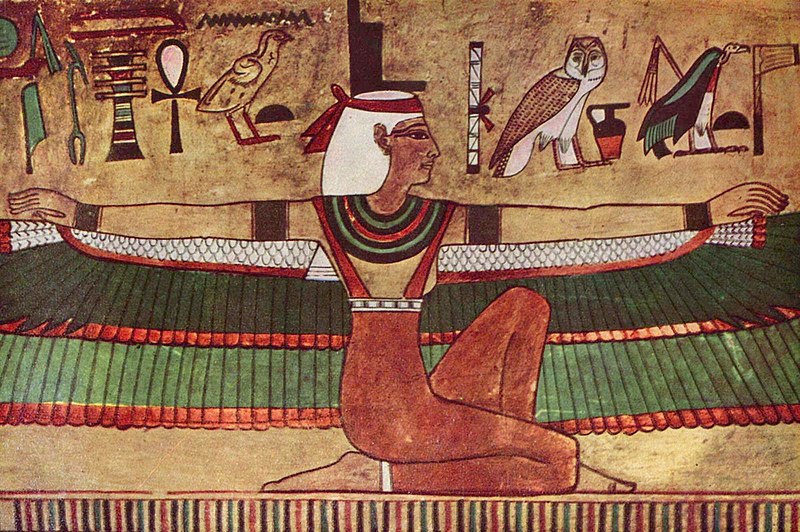
Isis, the mother goddess of fertility and maternity, was one of the most significant goddesses in ancient Egyptian religion. She was also linked to magic and healing, and she was revered as a guardian of the dead.
Isis was frequently represented as a woman with cow horns, a solar disk, and a serpent on her head, as well as spread wings. She was frequently shown nursing her son, the god Horus, who represented monarchy and protection.
Isis was crucial to the tale of Osiris, her husband, who was killed by his brother Set and then resurrected by Isis. Isis looked for and rebuilt Osiris’ body after his death, using her magical skills to bring him back to life.
Isis and Osiris had their son Horus together, who would go on to avenge his father’s death and become the god of kingship and the sky.
Isis was also associated with magic and healing, and was thought to have the ability to heal illness and protect from harm. She was frequently invoked during childbirth and was regarded as a protecting mother figure by all of her believers.
Isis’ cult was very prominent throughout Egypt’s Late Period, and her influence may be traced in many parts of Egyptian society. Her cult expanded to other nations and religions, including the Greco-Roman world and early Christianity, and she was worshiped throughout the Mediterranean globe.
Isis is still one of the most iconic and identifiable heroines from Egyptian mythology today, inspiring art, literature, and popular culture all across the world. Her legacy as the fertility and motherhood mother goddess remains a potent symbol of care and protection.
5. Horus
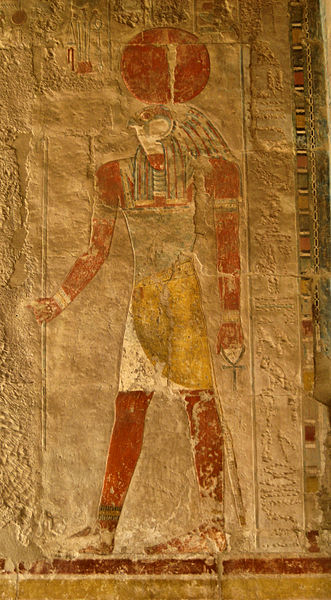
Horus Horus was a god of the sky, royalty, and protection in ancient Egypt. He was sometimes represented as a falcon or a man with a falcon’s head, and he wore a crown or headgear.
Horus, the son of Isis and Osiris, was a key figure in Egyptian mythology and was seen as a symbol of divine rule. Horus was the successor to Osiris’ throne and fought against his uncle, according to legend. Intent on avenging his father’s death and reclaiming his rightful throne.
Horus was strongly identified with Egypt’s pharaohs, who were regarded as his earthly representatives. He was frequently depicted in artwork and iconography as defending the pharaohs from danger, and he was thought to have the power to protect Egypt from its foes.
Horus was also associated with the sun and the day-night cycle, and was sometimes represented as the sun disk itself. He was viewed as a great agent of creation and rebirth, and his cult was particularly prominent throughout the Old Kingdom and Middle Kingdom periods.
Horus’ influence may be found in many parts of Egyptian culture, including religious ceremonies, art, and architecture. His likeness was frequently depicted in temple reliefs and statues, and his name was mentioned in prayers and hymns.
Horus is still one of the most recognizable and iconic figures from Egyptian mythology, inspiring art, literature, and popular culture all across the world.
6. Thoth
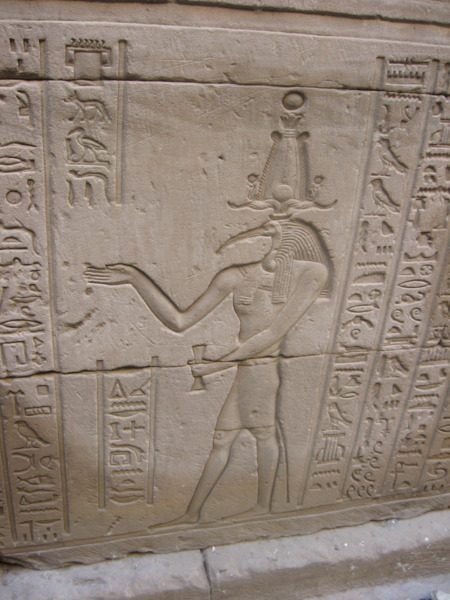
Thoth was an Egyptian god who was linked with writing, intelligence, and the moon. He was frequently represented as a man with the head of an ibis or a baboon, with a lunar disk and crescent moon on his head.
As the scribe of the gods and the inventor of writing, Thoth was vital to Egyptian mythology. He was credited with giving the Egyptians the gift of writing and with the development of hieroglyphics, the ancient Egyptian writing system. As a result, he was revered as the god of wisdom, science, and mathematics.
Also Read: Facts About Thoth
In addition to being associated with writing and intelligence, Thoth was also associated with the moon and was thought to have the ability to manipulate time. In artwork and mythology, he was frequently shown wielding a staff with a serpent wrapped around it, as a symbol of his strength and authority.
Thoth’s cult was very strong in ancient Egypt during the New Kingdom period, and his influence can be observed in many facets of Egyptian society. His likeness was frequently depicted in temple reliefs and statues, and his name was mentioned in prayers and hymns.
He was very close to the god Amun, and together they created the great god Amun-Ra, who was worshiped as the monarch of all gods.
Thoth is still one of the most recognizable and iconic figures from Egyptian mythology, inspiring art, literature, and popular culture all across the world. His legacy as the deity of writing, wisdom, and the moon remains a powerful emblem of study and knowledge.
7. Set
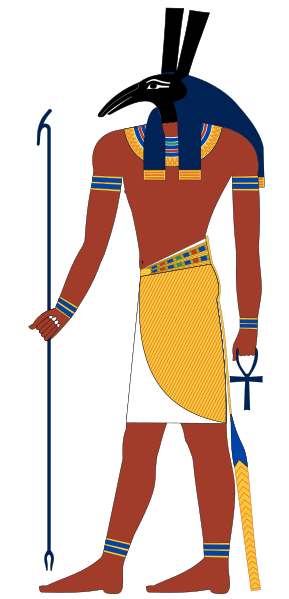
Set, also known as Seth or Sutekh, was a god of disorder, violence, and the desert in ancient Egypt. He was frequently shown as a man with an animal’s head, generally a donkey or a jackal, and holding a long staff or spear.
Also Read: Facts About Seth
Set was noted in Egyptian mythology for his feud with his brother Osiris, the god of the afterlife and fertility. Set was envious of Osiris’ power and fame, therefore he murdered him to take his reign. Set was eventually defeated by Osiris’ son Horus, who went on to become the god of kingship and the sky.
Set was also associated with the desert, which was perceived to be a chaotic and deadly environment. He was thought to have the ability to control storms and other natural calamities, and he was frequently called in prayers for protection from such events.
Despite his bad reputation, Set was seen as a potent force of renewal and rebirth. He was closely associated with the star Sirius, which rose shortly before the yearly flooding of the Nile and was regarded as a symbol of the arrival of new life and abundance.
Set’s cult was particularly strong in ancient Egypt during the early dynastic period, and his influence may be observed in many parts of Egyptian society. His likeness was frequently depicted in temple reliefs and statues, and his name was mentioned in prayers and hymns.
Set is still one of the most divisive and enigmatic entities in Egyptian mythology, eliciting both dread and fascination in modern culture.
8. Hathor
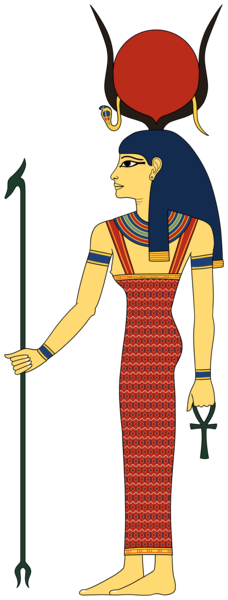
Hathor was an ancient Egyptian goddess of love, beauty, fertility, and motherhood. She was frequently shown as a woman with cow horns and a sun disk on her head, but she was sometimes depicted as a cow or with outstretched wings.
As the companion of the god Horus, Hathor was seen as a caring and nurturing mother figure in Egyptian mythology. She was linked with the protection of children and families and was frequently invoked during childbirth.
Hathor was also linked to music, dance, and festivities. She was frequently shown with a sistrum, a melodic instrument used in religious rites and festivals. Hathor’s cult was very prevalent in ancient Egypt during the New Kingdom period, and her influence may be observed in many parts of Egyptian society.
Hathor was intimately related with Isis, who was also identified with motherhood and fertility. These combined to make a potent emblem of femininity and caring that was revered across Egypt.
Nowadays, Hathor is one of the most known and iconic figures from Egyptian mythology, inspiring artists, writers, and popular culture all over the world. Her legacy as the goddess of love, beauty, and maternity remains a strong emblem of femininity and care.
9. Bastet
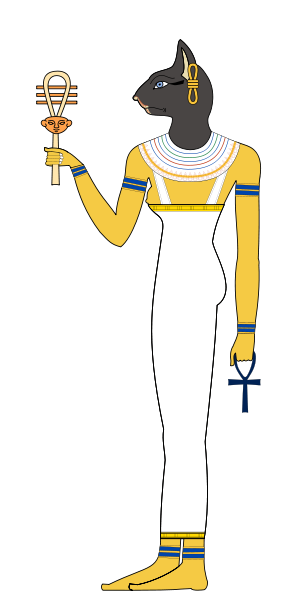
Bastet was an Egyptian goddess who was connected with fertility, domesticity, and feminine authority. She was frequently represented as a woman with a cat’s head, holding a sistrum or a basket of kittens.
As the defender of the home and the domestic cat, Bastet was a key figure in Egyptian mythology. She was also associated with conception and childbirth, and she was frequently invoked as a goddess of love and pleasure.
Also Read: Facts About Bastet
Bastet was affiliated with the goddess Sekhmet, who was associated with war and devastation, in addition to her domestic connotations. In some mythology, Bastet was regarded as a milder, more benevolent aspect of Sekhmet, and she was summoned to protect against the other goddess’s anger.
Bastet’s cult was most strong throughout Egypt’s Late Period, and her influence may be traced in many parts of Egyptian society. Her picture appeared frequently in temple reliefs and statues, and her name was employed in prayers and hymns.
Bastet is still one of the most recognizable and iconic figures from ancient Egyptian mythology, inspiring art, literature, and popular culture around the world. Her legacy as the goddess of fertility, domesticity, and feminine power remains a potent symbol of care and protection.
10. Sobek
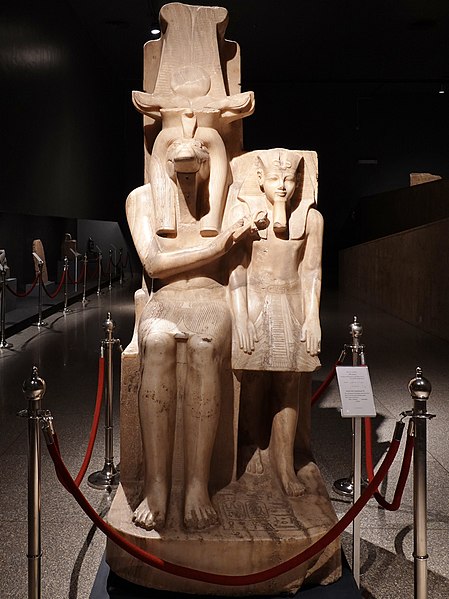
Sobek was an ancient Egyptian god linked with the Nile River, fertility, and protection. He was frequently represented as a man with the head of a crocodile or as a crocodile himself, wearing a crown or headgear.
Sobek was a great force of rebirth and fertility in Egyptian mythology, thought to have created the Nile River. He was frequently identified with Egypt’s pharaohs, who were regarded as his earthly representatives.
Sobek was also regarded as a protective deity, and was frequently invoked to defend against the perils of the Nile, such as crocodiles and other wild creatures. He was regarded as a powerful and terrifying god, but he was also thought to have the ability to heal and bring riches.
Sobek’s cult was most strong during the Middle and New Kingdoms of ancient Egypt, and his influence can be observed in many parts of Egyptian society. His picture was frequently employed in temple reliefs and statues, and his name was invoked in prayers and hymns.
Sobek is still one of the most recognizable and iconic figures from ancient Egyptian mythology, inspiring art, literature, and popular culture around the world. His legacy as the deity of the Nile, fertility, and protection remains a powerful symbol of renewal and wealth.
11. Ptah
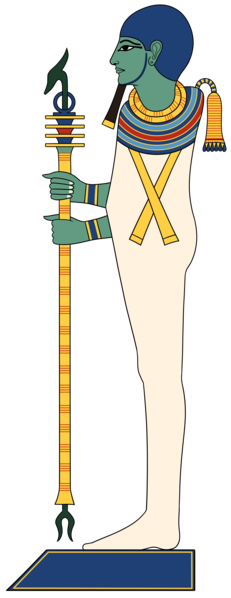
Ptah was an ancient Egyptian god connected with craftsmanship, creation, and fertility. He was frequently shown as a man wrapped in bandages, wearing a skull helmet and holding a scepter, and with a blue beard or a mummified bull sign.
Ptah was regarded in Egyptian mythology as a creator god who created the universe via the power of his speech. He was also associated with Memphis, where he was worshiped as a great and prominent divinity.
Ptah was strongly tied with workmanship and was revered as the patron god of artisans and builders. He was also associated with fertility and was frequently invoked in prayers for the protection of children and pregnant mothers.
Ptah’s cult was most prevalent during the New Kingdom period of ancient Egypt, and his influence can be traced in many facets of Egyptian society. His picture was frequently employed in temple reliefs and statues, and his name was invoked in prayers and hymns.
Ptah is still one of the most recognizable and iconic figures from ancient Egyptian mythology, inspiring art, literature, and popular culture around the world. His legacy as the deity of craftsmanship, creation, and fertility remains a powerful emblem of innovation and regeneration.
12. Sekhmet
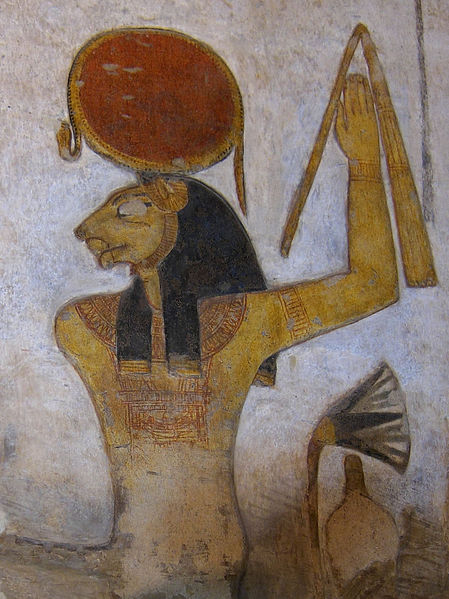
Sekhmet was an ancient Egyptian goddess linked with war, devastation, and healing. She was frequently represented as a lady with the head of a lioness, carrying a sun disk on her head or clutching a scepter.
In Egyptian mythology, Sekhmet was a powerful and terrifying goddess with the ability to destroy entire armies and towns. She was revered as the pharaohs’ guardian and was frequently invoked in combat prayers for protection and success.
Also Read: Facts About Sekhmet
Sekhmet was also associated with healing and was thought to have the ability to cure illness and disease. Her religion was most prominent during the New Kingdom period of ancient Egypt, and her influence may be observed in many elements of Egyptian society.
Sekhmet was frequently shown as a strong and powerful warrior, but she was also portrayed as a caring and protecting mother figure. She was sometimes paired with the goddess Bastet, who was associated with fertility and domesticity, and together they constituted a potent emblem of feminine strength and authority.
Sekhmet is still one of the most recognizable and iconic figures from ancient Egyptian mythology, inspiring art, literature, and popular culture around the world. Her legacy as the goddess of war, devastation, and healing remains a potent emblem of strength and protection.
13. Amun
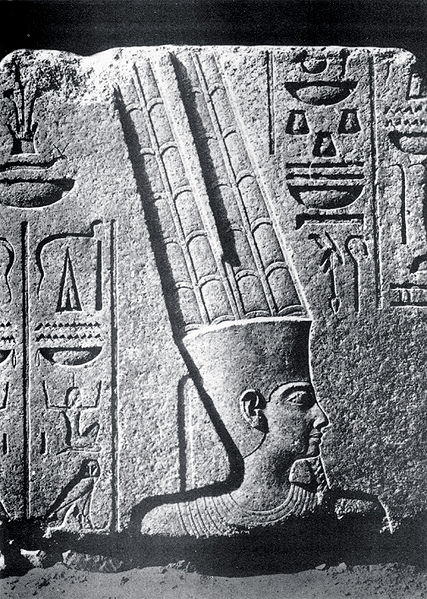
Amun was an ancient Egyptian god who was worshiped as the monarch of all gods and was regarded as the creator and protector of the universe. He was frequently shown as a man wearing a crown or headdress, and he was occasionally shown with the head of a ram or a goose.
In Egyptian mythology, Amun was thought to have created the world and all living things, and was considered as a great force of creation and renewal. He was identified with the sun and the cycle of day and night, and he was thought to control the cycles of life and death.
Also Read: Facts About Amun
Amun was also strongly tied with Egypt’s pharaohs, who were viewed as his earthly representatives. He was frequently shown in artwork and iconography as defending the pharaohs from danger, and he was thought to have the capacity to protect Egypt itself from its foes.
Amun’s cult was most prevalent during the New Kingdom period of ancient Egypt, and his influence can be traced in many facets of Egyptian society. His picture was frequently employed in temple reliefs and statues, and his name was invoked in prayers and hymns.
Amun is still one of the most recognizable and iconic figures from ancient Egyptian mythology, inspiring art, literature, and popular culture around the world. His legacy as the ruler of all gods and the creator and protector of the universe remains a profound emblem of power and authority.
14. Nephthys
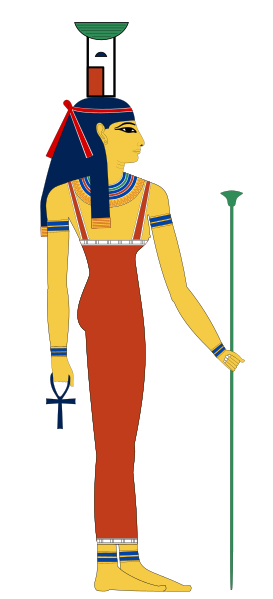
Nephthys was an ancient Egyptian deity linked with death, grieving, and the afterlife. She was frequently represented as a woman with the hieroglyph meaning “home” on her head and wearing a crown or headdress.
In Egyptian mythology, Nephthys was the sister of the goddess Isis and the wife of the god Set. She was frequently associated with mourning and was thought to comfort and protect the dead in the afterlife.
Nephthys was also strongly associated with Osiris, the deity of the afterlife and fertility. Nephthys, along with Isis, was important to the Osiris myth, helping to protect and resurrect him after his death.
Nephthys’ cult was most strong during the Late Period of ancient Egypt, and her influence may be traced in many elements of Egyptian society. Her picture was frequently employed in temple reliefs and statues, and her name was invoked in prayers and hymns.
Nowadays, Nephthys is one of the most recognizable and iconic figures from Egyptian mythology, inspiring art, literature, and popular culture all over the world. Her legacy as the goddess of death, grieving, and the afterlife remains a potent symbol of protection and comfort.
15. Tefnut
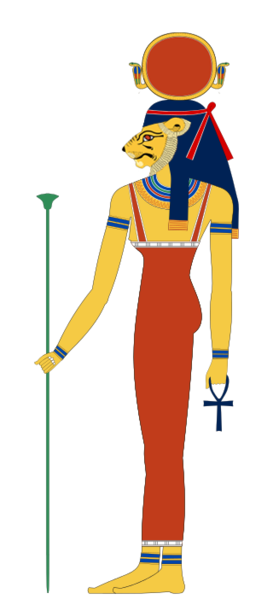
Tefnut was an ancient Egyptian goddess linked with moisture, rain, and the sun. She was frequently represented as a lady with the head of a lioness or a cat, with a sun disk and a serpent on her head.
Tefnut was the daughter of the god Atum, and she was said to have been produced from his tears. She was strongly tied with the sun and was frequently shown as a great force of creation and regeneration.
Tefnut was also associated with moisture and rain, and was thought to have the ability to manipulate the weather. She was frequently invoked in prayers for rain and fertility, and was connected with crop growth and abundance.
Tefnut’s cult was particularly important in ancient Egypt throughout the Old Kingdom and Middle Kingdom periods, and her influence can be traced in many elements of Egyptian society. Her picture was frequently employed in temple reliefs and statues, and her name was invoked in prayers and hymns.
Tefnut is still one of the most recognizable and iconic figures from ancient Egyptian mythology, inspiring art, literature, and popular culture around the world. Her legacy as the goddess of moisture, rain, and the sun remains a potent emblem of creation and wealth.
